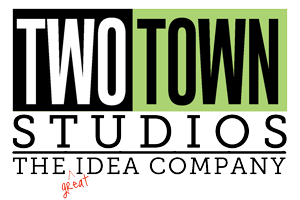Break It Down
So, you want to license your chicken designs, or woodland creatures, a particular unique pattern or maybe your poem or clever saying. Good! But before you head off down the yellow brick road, portfolio in hand, recognize that what may seem like a single assumption on your part – that you can license your (whatever) for (whatever) – is actually an entire set of related hypothesis. Such as:
1. The art/design is good enough. Licensed art has to be “good enough” on any number of levels. It is a given that the artist needs to be skilled. But wait, there’s more! Is the concept fresh, is the subject matter acceptable to the consumer, is the design composition handled well, are the colors and the technique reproducible on products, and so on. When a client evaluates art for licensed product there are many factors that come into play, and any one of them may torpedo a deal. Also note the opposite of good enough isn’t necessarily “bad”, many times it just means not usable.
2. There is more value derived from using my art than that of my competitor. If this is not true, then why would they use your art? There will be a number of factors that contribute to its “value” for the licensee: the style is currently popular, the art is already finished, the designer is easy to work with, they have a history with you or they just like you or your agent more than the next in line (seriously), they believe you are capable of creatively expanding a line when the other person is not… the list goes on. Note that some of these may be only perceptions of the licensee, as opposed to reality, however they carry full weight.
3. There is a need for the category of product. Maybe you could design the best ever figurines, calendars, posters, TV lamps, lunchboxes, CD cases, picture frames, clocks or checks. But why would you? Your client is making a product to sell into a fickle and changing marketplace, so strive to be in categories that are healthy, not declining.
4. You can find the right licensee. First you have to determine what market channel this product will sell into, and then you have to identify what licensees sell similar products into that same channel. Then get it in front of the right person at that company. Easy? Not always, but you need to do that work.
5. People will have the required “Me Too” reaction. Every product has to connect with the end user on some level or it won’t sell. Period. They have to need it, or want it, or want to give it, or want to say it. More often than not your art is the face of the product, so people must connect with your art and/or your message. Hopefully you have already proven they will – art fairs, Etsy, other licenses, your own line of products – there are many ways to validate your “concept” that will give you a leg up with a client. If nothing else you will quickly learn what does and doesn’t work.
This is by no means a complete list, and if it seems complex, well, that’s the point. It can be. No decision is made in a vacuum, and while you cannot address all the different factors it helps to first recognize that they exist, and then start thinking about how they will influence whether you get that license or not. Work on talking to yourself in complete sentences:
“People like my poems” is nice. “People like my poems on greeting cards because that helps them say things they otherwise cannot say, and I have 24 of them arranged as a collection” is so much better.
“I want to license my woodland critters” is nice. “I want to license my woodland critters as a repeating toss pattern on fabric for quilting, and I have 3 distinctly different versions prepared” gets you much further along.
The good news is, the more you practice looking at the components of the big picture, the easier it becomes to see it.

Leave a Reply
Want to join the discussion?Feel free to contribute!